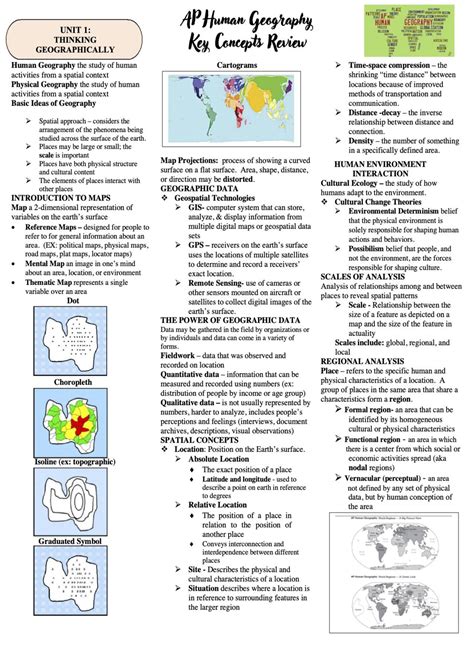Introduction

Distribution, a fundamental concept in AP Human Geography, explores the spatial arrangement of people, resources, and activities across Earth’s surface. Understanding distribution patterns is crucial for unraveling complex geographical phenomena and devising informed solutions to global challenges.
Types of Distribution
There are various types of distribution based on their spatial patterns:
- Clustered: Items are concentrated in specific locations, forming clusters.
- Dispersed: Items are spread out with little or no clustering.
- Random: Items occur without any discernible pattern.
- Linear: Items are distributed along a line feature, such as a river or road.
- Uniform: Items are spaced evenly across an area.
Measures of Distribution
Geographers measure distribution using various statistical techniques:
- Mean: The average value of a sample.
- Median: The middle value of a sample.
- Standard Deviation: A measure of how spread out a sample is.
- Coefficient of Variation: A measure of the relative variability of a sample.
- Location Quotient: A measure of the concentration of a phenomenon in a particular area compared to the broader region.
Factors Influencing Distribution
Numerous factors influence distribution patterns, including:
- Physical Factors: Topography, climate, water resources, soil fertility
- Social Factors: Population density, cultural preferences, economic activities
- Economic Factors: Industrial location, transportation networks, market access
- Political Factors: Government policies, boundaries, resource allocation
Consequences of Uneven Distribution
Uneven distribution can lead to significant economic, social, and environmental disparities:
- Regional Imbalances: Unequal distribution of resources and opportunities can create regional disparities in wealth, development, and well-being.
- Environmental Degradation: Concentrated populations and activities can cause pollution, deforestation, and other environmental problems.
- Social Conflict: Resource scarcity and unequal access can fuel social tension and conflict.
Applications of Distribution Analysis
Distribution analysis has numerous practical applications, including:
- Site Selection: Identifying optimal locations for businesses, industries, and public facilities.
- Resource Allocation: Equitably distributing resources and services to meet local needs.
- Environmental Management: Identifying areas at risk for environmental degradation and implementing conservation measures.
- Disaster Preparedness: Predicting the likelihood and severity of natural disasters based on population distribution and infrastructure.
Case Studies of Distribution
1. Urbanization and Population Distribution
According to the United Nations, over 55% of the world’s population lives in urban areas. This concentration has led to increased economic opportunities, but also challenges such as overcrowding, pollution, and inequality.
2. Location of Economic Activities
Industrial clusters are often found in areas with favorable transportation, infrastructure, and proximity to markets. For example, Silicon Valley in California is a hub for the technology industry due to its access to skilled labor, universities, and venture capital.
3. Distribution of Natural Resources
Natural resources, such as minerals, water, and fertile land, are unevenly distributed across the globe. This distribution influences economic development, trade patterns, and geopolitical relationships.
Conclusion
Distribution is a fundamental concept in AP Human Geography that provides insights into the spatial organization of human society and the environment. Understanding distribution patterns is essential for addressing global challenges, promoting economic equity, and ensuring sustainable development. By analyzing the distribution of people, resources, and activities, geographers contribute to informed decision-making and the creation of a more just and harmonious world.
Table 1: Types of Distribution
| Type of Distribution | Pattern | Example |
|---|---|---|
| Clustered | Objects concentrated in specific areas | Urban settlements |
| Dispersed | Objects spread out with little or no clustering | Rural settlements |
| Random | Objects occur without any discernible pattern | Natural disasters |
| Linear | Objects distributed along a line feature | Transportation networks |
| Uniform | Objects spaced evenly across an area | Agricultural fields |
Table 2: Measures of Distribution
| Measure | Description |
|---|---|
| Mean | Average value |
| Median | Middle value |
| Standard Deviation | Spread of a sample |
| Coefficient of Variation | Relative variability of a sample |
| Location Quotient | Concentration of a phenomenon |
Table 3: Factors Influencing Distribution
| Factor | Type | Examples |
|---|---|---|
| Physical | Natural | Topography, climate, water resources |
| Social | Human | Population density, cultural preferences |
| Economic | Market | Industrial location, transportation networks |
| Political | Institutional | Government policies, boundaries |
Table 4: Applications of Distribution Analysis
| Application | Purpose |
|---|---|
| Site Selection | Identifying optimal locations for facilities |
| Resource Allocation | Equitable distribution of resources |
| Environmental Management | Identifying areas at risk for degradation |
| Disaster Preparedness | Predicting natural disaster likelihood and severity |
